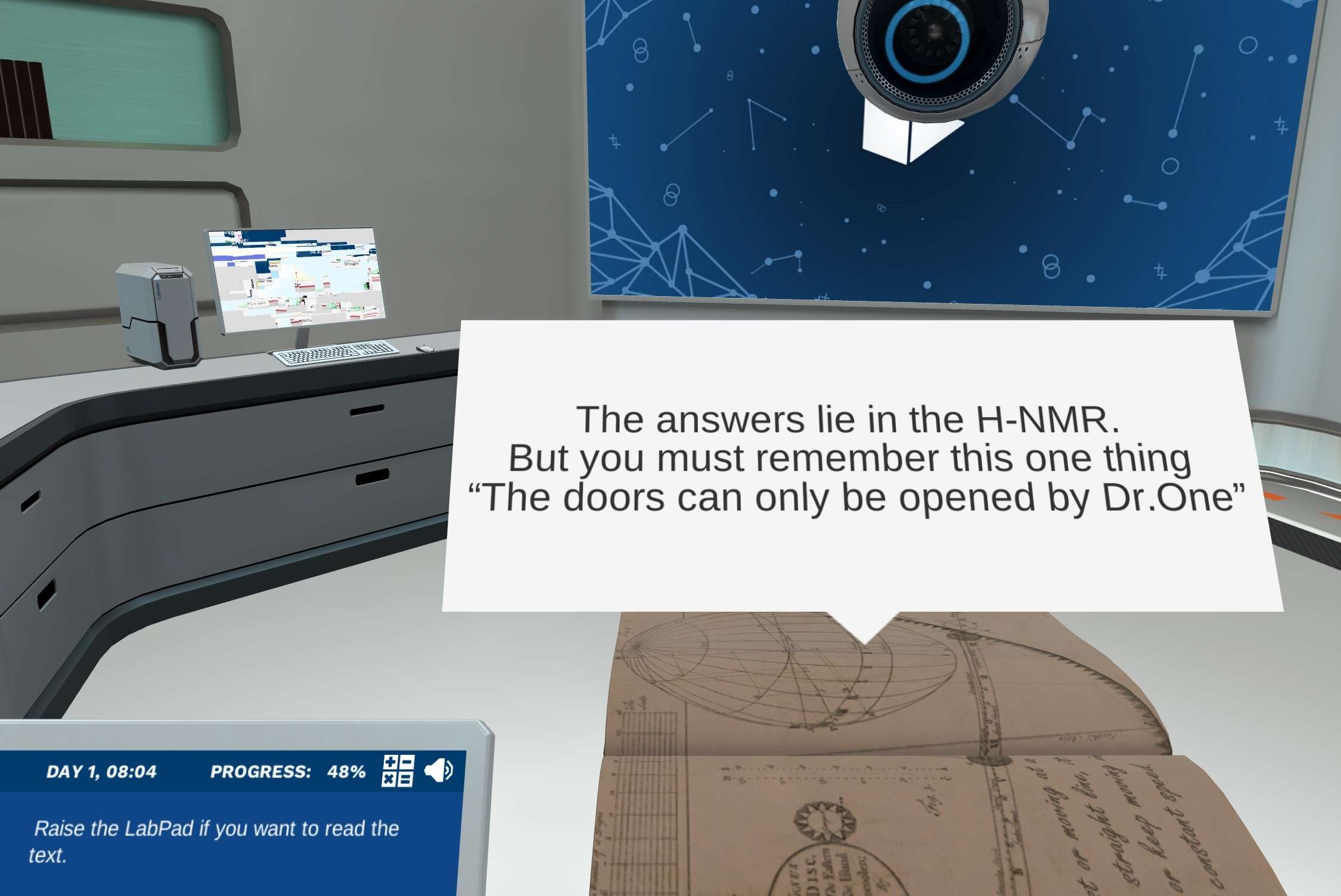Heading 1
Heading 2
Heading 3
Heading 4
Heading 5
Heading 6
Lorem ipsum dolor sit amet, consectetur adipiscing elit, sed do eiusmod tempor incididunt ut labore et dolore magna aliqua. Ut enim ad minim veniam, quis nostrud exercitation ullamco laboris nisi ut aliquip ex ea commodo consequat. Duis aute irure dolor in reprehenderit in voluptate velit esse cillum dolore eu fugiat nulla pariatur.
Block quote
Ordered list
- Item 1
- Item 2
- Item 3
Unordered list
- Item A
- Item B
- Item C
Bold text
Emphasis
Superscript
Subscript
About This Simulation
Take on the challenge of analyzing the spectra of four key analytical techniques — Mass Spectrometry, Infrared spectroscopy, Proton NMR and Carbon-NMR — to identify the structure of an unknown organic compound.
Learning Objectives
- Understand the chemical information you can gain from each technique.
- Apply the theory behind Proton-NMR, Carbon NMR, Infrared and Mass Spectrometry to methodically analyze spectral data to identify the chemical characteristics of an unknown compound
- Use critical thinking to identify the correct structure from provided options
About This Simulation
Lab Techniques
- Infrared Spectroscopy
- Mass spectrometry
- Carbon NMR
- Proton NMR
Related Standards
- US College Year 2
- US College Year 3
Learn More About This Simulation
Detective work is never more exciting than when it’s combined with organic chemistry! In this simulation, you will take part in the escape room-style learning activities to uncover the identity of an unknown organic compound. Practice your skills in spectral analysis by picking out the key information given from each technique to put the pieces of the puzzle together and unmask the identity of the unknown organic compound.
Interpreting Spectra
Gain some practice interpreting four different types of spectra: Mass Spectroscopy, Infrared Spectroscopy, Proton NMR and Carbon NMR. Partake in four different fun lab rooms dedicated to each technique, where you can focus on analyzing one spectrum at a time and gather pieces of the puzzle. Learn how you can confirm your findings from one spectrum to another.
Unmask the unknown compound
Learn how you can uncover the structural identity of an organic compound only by the four spectra and the chemical formula of the unknown. Eliminate the structures from the list provided in the beginning of the simulation as you find key structural information, whether it is functional groups from Infrared spectroscopy, fragment and molecular ions from Mass Spectroscopy or group connectivity from both Proton and Carbon NMR spectra.
Piece together information from each spectra
Complete each spectral analysis and confirm your findings with a fun conclusion room where you review your analyses of each spectra and see how exactly you pieced together the puzzle. Enjoy bonus mini-games as you solve escape room-style puzzles that unlock the doors to the next spectroscopic technique for analysis.
For Science Programs Providing a Learning Advantage
Boost STEM Pass Rates
Boost Learning with Fun
75% of students show high engagement and improved grades with Labster
Discover Simulations That Match Your Syllabus
Easily bolster your learning objectives with relevant, interactive content
Place Students in the Shoes of Real Scientists
Practice a lab procedure or visualize theory through narrative-driven scenarios


FAQs
Find answers to frequently asked questions.
Heading 1
Heading 2
Heading 3
Heading 4
Heading 5
Heading 6
Lorem ipsum dolor sit amet, consectetur adipiscing elit, sed do eiusmod tempor incididunt ut labore et dolore magna aliqua. Ut enim ad minim veniam, quis nostrud exercitation ullamco laboris nisi ut aliquip ex ea commodo consequat. Duis aute irure dolor in reprehenderit in voluptate velit esse cillum dolore eu fugiat nulla pariatur.
Block quote
Ordered list
- Item 1
- Item 2
- Item 3
Unordered list
- Item A
- Item B
- Item C
Bold text
Emphasis
Superscript
Subscript
A Labster virtual lab is an interactive, multimedia assignment that students access right from their computers. Many Labster virtual labs prepare students for success in college by introducing foundational knowledge using multimedia visualizations that make it easier to understand complex concepts. Other Labster virtual labs prepare learners for careers in STEM labs by giving them realistic practice on lab techniques and procedures.
Labster’s virtual lab simulations are created by scientists and designed to maximize engagement and interactivity. Unlike watching a video or reading a textbook, Labster virtual labs are interactive. To make progress, students must think critically and solve a real-world problem. We believe that learning by doing makes STEM stick.
Yes, Labster is compatible with all major LMS (Learning Management Systems) including Blackboard, Canvas, D2L, Moodle, and many others. Students can access Labster like any other assignment. If your institution does not choose an LMS integration, students will log into Labster’s Course Manager once they have an account created. Your institution will decide which is the best access method.
Labster is available for purchase by instructors, faculty, and administrators at education institutions. Purchasing our starter package, Labster Explorer, can be done using a credit card if you are located in the USA, Canada, or Mexico. If you are outside of North America or are choosing a higher plan, please speak with a Labster sales representative. Compare plans.
Labster supports a wide range of STEM courses at the high school, college, and university level across fields in biology, chemistry, physics, and health sciences. You can identify topics for your courses by searching our Content Catalog.















